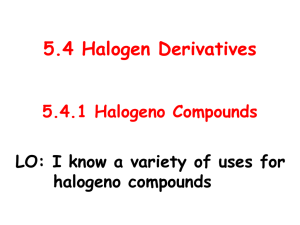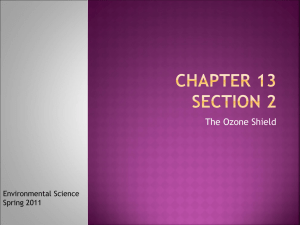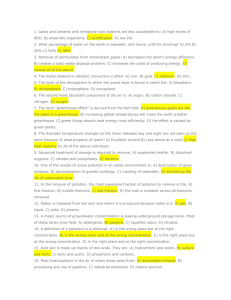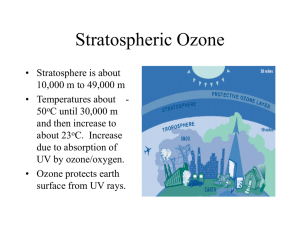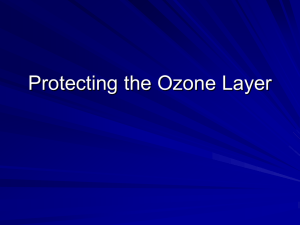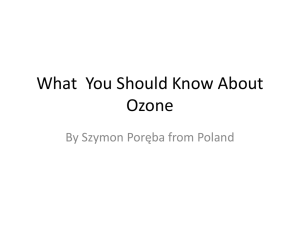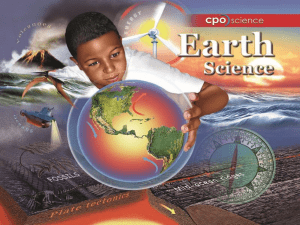Ozone
advertisement
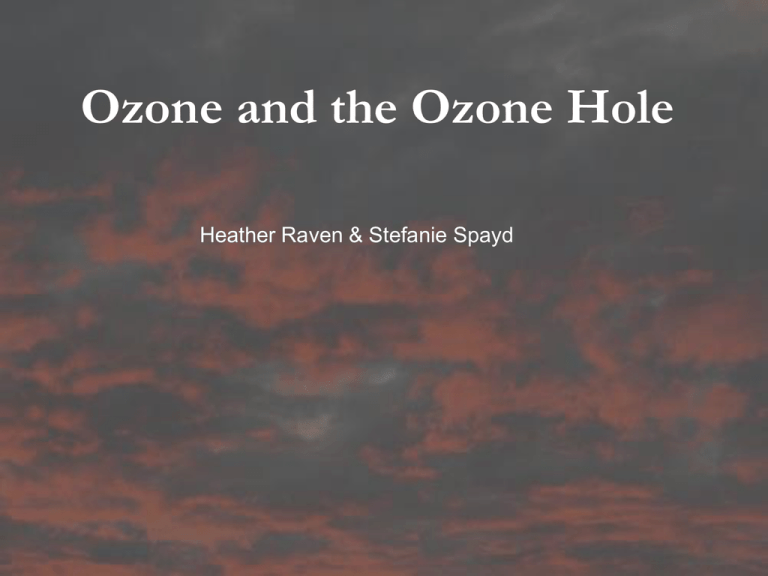
Ozone and the Ozone Hole Heather Raven & Stefanie Spayd Background Magnitude of polar O3 loss depends on chlorine activation which is controlled by polar stratospheric clouds that depend on temperature (Tilmes et al., 2006) What are the important factors? Sunlight, Greenhouse Gases, and Temperature The Arctic also has an ozone hole, but has greater total column ozone than in the Antarctic because of dynamical re-supply of ozone (less O3 loss) Antarctic has larger polar vortex and colder temps than Arctic = more concerned with O3 at the southern pole (greater O3 loss) New studies predict that no statistically significant change in ozone hole decrease will occur until about 2024 (Newman et al., 2006) Full recovery sometime between 2053 and 2084 Sunlight Catalyst to breaking up the ozone layer. Breaks up O3 into O2 and O Breaks up CFCs to produce Cl Cl combines with Oxygen atoms, preventing them from combining with O2 to form ozone. Thus, creating a lack of ozone molecules in the atmosphere. Greenhouse Gases and Ozone Hole Greenhouse gases warm the troposphere and cool the stratosphere. Polar stratospheric clouds (PSCs) contain molecules with chlorine, when the molecules react they form Cl2 after which sunlight splits the molecule into Cl + Cl. PSCs form only in very cold stratosphere. Global warming is effectively enhancing ozone depletion! Stopping emission of GHGs now does not get rid of them right away: Important to note that CFCs have remained in atmosphere even after emission ceased due to Montreal Protocol (lifetime 65 – 400 years) The main players: Chlorofluorohydrocarbons (CFCs) CO2 H2O Temperature and Ozone Climate Change = Changing Temperature in the Stratosphere GHG ↑ Temperature ↓ Ozone hole duration ↑ (In Antarctic) Cooling of lower-stratosphere contributes to ozone loss: Chlorine activation below 195 K temps in stratosphere 195 K is threshold for formation of PSCs Antarctic below this threshold much of winter season Arctic below this threshold less in winter season, less ozone loss from chlorine Take Home Points Continued anthropogenic release of greenhouse gases, not only CFCs, into the atmosphere will enlarge the ozone holes, letting more harmful UV rays reach the Earth’s surface. Temperature of the stratosphere is a key factor, as is sunlight, in the depletion of ozone. These processes are all intimately connected through chemical, radiative, and dynamical feedbacks.




